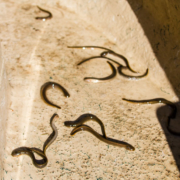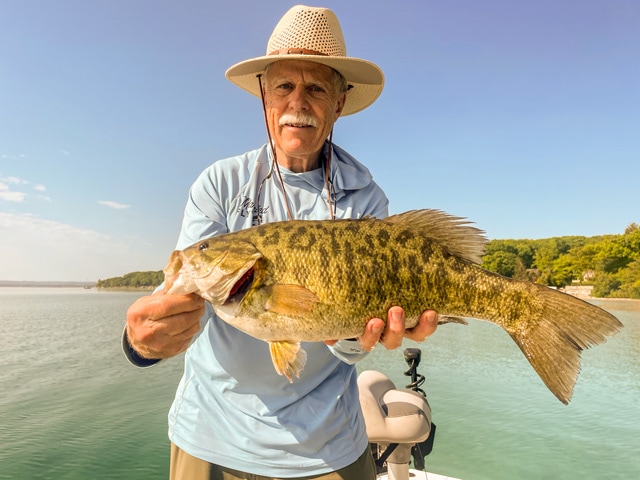Chestnut Lamprey

Chestnut Lamprey
The Chestnut Lamprey, Ichthyomyzon castaneus, is a Native Species commonly found in Lakes and Rivers throughout the Great Lakes. They are considered to be an indicator species, their presence indicates healthy clean water. However, there is one negative component to their presence in a watershed and that is their potential impact upon fish populations during the parasitic phase.
The chestnut Lamprey has two primary life stages to complete its life cycle. The first life stage is the larval phase, commonly referred to as ammocoetes, in which the larval form is primarily a filter feeding organism. The larva will live in the fine and silty bottom sediments of slower backwater pools for 5-7 years on average. When the larva reach 4-6 years of age they go through a metamorphosis, developing teeth and a sucking mouth disk characterized by the adult parasitic phase of their life cycle.
The metamorphic phase appears to take place from October through the end of January as the ammocoetes enter the parasitic adult life stage. As the water begins to warm in April, the larva exit their burrows and enter the parasitic feeding phase of their life cycle. The Chestnut Lamprey tends to be more active at night and during low light periods. Peak feeding periods for the adults range from May through July. Some adults will hold over until the following spring to spawn. The adult chestnut lamprey will continue to feed during the peak spawning season from June to July. After spawning the adults die and the cycle is repeated. (Hall, 1963)
Manistee River
In Michigan, most of our trout streams have established populations of Chestnut Lamprey. However, the Manistee River boasts a highly abundant population in the upper portions of the watershed. Chestnut Lamprey densities tend to be higher from County Road 612 to Sharon Road. As the water temperature reaches 50 F degrees the adults begin to feed. (Hall, 1963) This temperature change coincides nicely with the annual appearance of Chestnut Lamprey on the trout we catch throughout our trout season. Tapping into this information, it demonstrates the importance of Lamprey imitations for trout fishing the Manistee River. Streamer patterns tied with a long and “leechy” appearance with lots of undulating movement in the materials are very effective.
Matching the Hatch
Chestnut Lamprey will range in size from 4-5” early in their adult development. They can attain lengths of +7” at maturity. It’s not a coincidence that as the lamprey continue to become more active, the streamer fishing becomes more consistent. The trout are not only actively feeding at this time, but they are also combating the presence of an “alien intruder”! It’s not uncommon to see some pretty exciting visuals while fishing “leechy” patterns this time of year. Some fish will recklessly chase them out of their territory and will often strike with violent takes.
Take this information for what it is worth, but having an understanding of this natural phenomenon can only help you. Fly selection, fly movement, and presentation are all critical components to angling success and one more arrow in the quiver is only a positive. The Chestnut Lamprey life cycle is another example of another hatch that you should pay close attention to. As we move closer to the trout season opener, this horror show will be underway in our streams.
Hall, J. 1963. An ecological study of the chestnut lamprey, Ichthyomyzon castaneus, in the Manistee River, Michigan. Ann Arbor, MI: University of Michigan.




